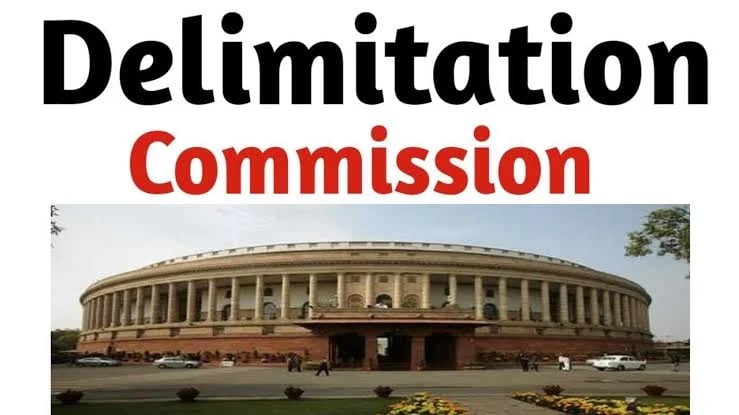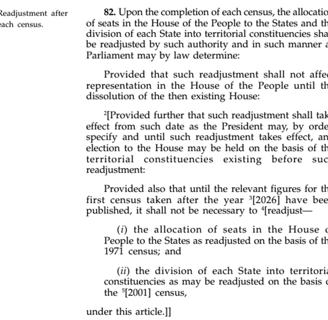Delimitation
India's Next Big Chapter
CURRENT AFFAIRS
Ashwin Sundaresh
11/6/20243 min read


The BJP government under Prime Minister Narendra Modi is set to begin the long-overdue process of census of the nation in 2025. The process, which was initially touted to start in 2021, had to be postponed due to the COVID pandemic that rocked the country. This census not only gives us a picture of the demography but also paves the way for better representation in the parliament. Our forefathers were aware of the ever-growing population and agreed upon reviewing the representation every 10 years through the process of ‘Delimitation’. So, what exactly is 'Delimitation'? Let us find out:
What is Delimitation?
Delimitation is a re-adjustment mechanism where the boundaries of territorial constituencies are set to be fixed for both the Lok Sabha as well as for the Vidhana Sabha based on population. This was enforced as part of Article 82 and Article 170 of the Indian Constitution.
Why delimitation?
The delimitation process is an essential part of democracy, where every individual must get a fair representation. This move not only pushes for equal representation for equal groups of people but also neutralizes the edge of a particular political party in each area.
How is the delimitation carried out?
The delimitation is carried out by a commission that is appointed by the President of India with the cooperation of the Election Commission of India. The commission comprises of a retired Supreme Court judge, the Chief Election Commissioner, and the respective state election commissioners. The commission’s role is to make sure that the boundaries are adjusted such that the population of all the constituencies is almost equal and to identify reserved seats so that people belonging to SC/ST communities get a fair share. It is important to note that the commission cannot be questioned in any court of law.


When was the last delimitation carried out?
The first delimitation occurred based on the 1951 census, which fixed the Lok Sabha seats at 494 for a population of 36.1 crores. The second delimitation that happened in 1961 increased the representation to 522 seats, whereas the third and most recent delimitation in 1971 pushed the count to 543 for a population of 54.8 crores.
What happened in 1971?
The calls for population control echoed across the country in the 1970s, and the government encouraged the states to take measures by freezing delimitation through the 42nd Amendment for the next 30 years, i.e., until the year 2000. This ensured that states with higher birth rates did not receive disproportionate representation. In the year 2002, the Vajpayee extended this till 2026 through the 84th Amendment Act. Hence, the current strength of the Lok Sabha is still based on the delimitation that was carried out based on the 1971 census.
What are the effects of delimitation that is supposed to take place in 2026?
There are two ways in which the exercise can be carried out:
Continue with the same number of 543 seats by redistributing the seats amongst the states.
Increase the number of seats to 848 seats to accommodate for the increase in population in every state.
Challenges:
The falling TFR in South Indian states implies that the northern states like UP, Bihar, and Rajasthan, which have maintained a TFR of over 2.1, get a bigger slice of the cake, whereas states like Karnataka, Kerala, and Tamil Nadu will have to settle for a smaller chunk. It is projected that Uttar Pradesh and Bihar would account for an increase of 102 seats, whereas Karnataka, Tamil Nadu, and United Andhra Pradesh are looking at an increase of 35 seats in total. The government is constantly working out the math to make sure that the Southern states have a fair share in addition to reserving seats for the SC/ST community based on their population.
